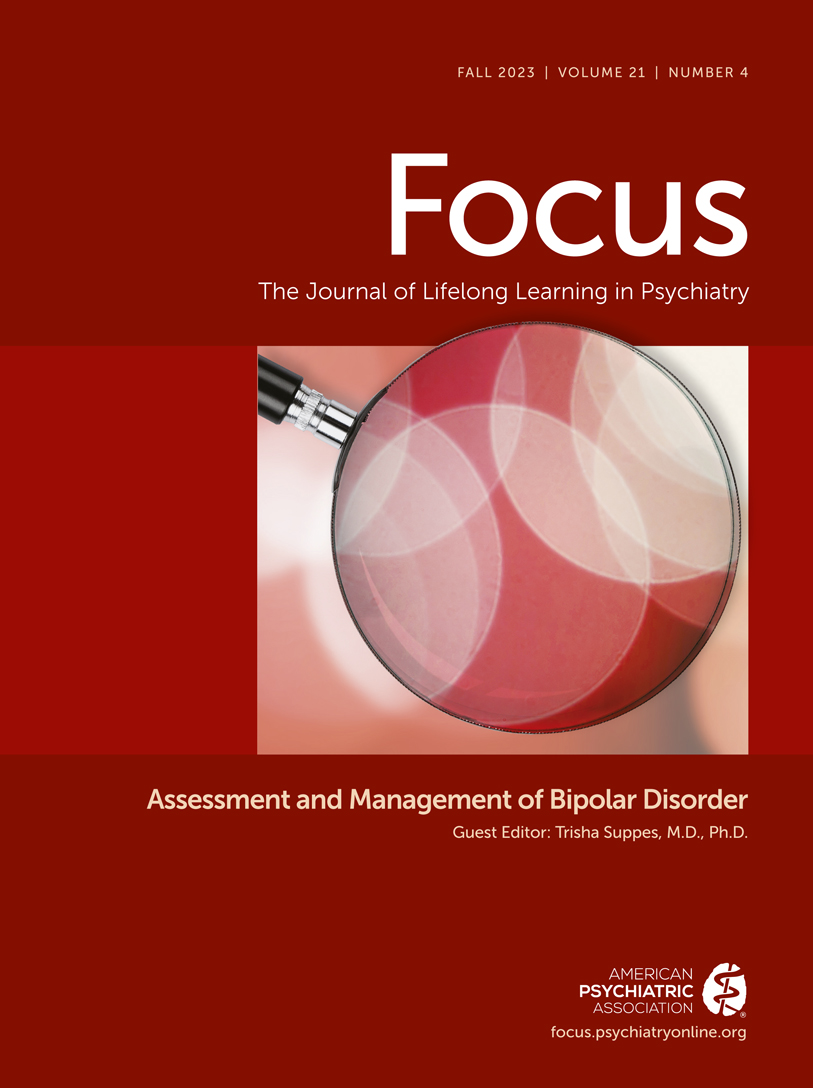A Risk Calculator to Predict Suicide Attempts Among Individuals With Early-Onset Bipolar Disorder
Abstract
Objectives:
To build a one-year risk calculator (RC) to predict individualized risk for suicide attempt in early-onset bipolar disorder.
Methods:
Youth numbering 394 with bipolar disorder who completed ≥2 follow-up assessments (median follow-up length = 13.1 years) in the longitudinal Course and Outcome of Bipolar Youth (COBY) study were included. Suicide attempt over follow-up was assessed via the A-LIFE Self-Injurious/Suicidal Behavior scale. Predictors from the literature on suicidal behavior in bipolar disorder that are readily assessed in clinical practice were selected and trichotomized as appropriate (presence past 6 months/lifetime history only/no lifetime history). The RC was trained via boosted multinomial classification trees; predictions were calibrated via Platt scaling. Half of the sample was used to train, and the other half to independently test the RC.
Results:
There were 249 suicide attempts among 106 individuals. Ten predictors accounted for >90% of the cross-validated relative influence in the model (AUC = 0.82; in order of relative influence): (1) age of mood disorder onset; (2) non-suicidal self-injurious behavior (trichotomized); (3) current age; (4) psychosis (trichotomized); (5) socioeconomic status; (6) most severe depressive symptoms in past 6 months (trichotomized none/subthreshold/threshold); (7) history of suicide attempt (trichotomized); (8) family history of suicidal behavior; (9) substance use disorder (trichotomized); (10) lifetime history of physical/sexual abuse. For all trichotomized variables, presence in the past 6 months reliably predicted higher risk than lifetime history.
Conclusions:
This RC holds promise as a clinical and research tool for prospective identification of individualized high-risk periods for suicide attempt in early-onset bipolar disorder.
Reprinted from Bipolar Disord 2022; 24:749–757, with permission from John Wiley and Sons. Copyright © 2022
Access content
To read the fulltext, please use one of the options below to sign in or purchase access.- Personal login
- Institutional Login
- Sign in via OpenAthens
- Register for access
-
Please login/register if you wish to pair your device and check access availability.
Not a subscriber?
PsychiatryOnline subscription options offer access to the DSM-5 library, books, journals, CME, and patient resources. This all-in-one virtual library provides psychiatrists and mental health professionals with key resources for diagnosis, treatment, research, and professional development.
Need more help? PsychiatryOnline Customer Service may be reached by emailing [email protected] or by calling 800-368-5777 (in the U.S.) or 703-907-7322 (outside the U.S.).



